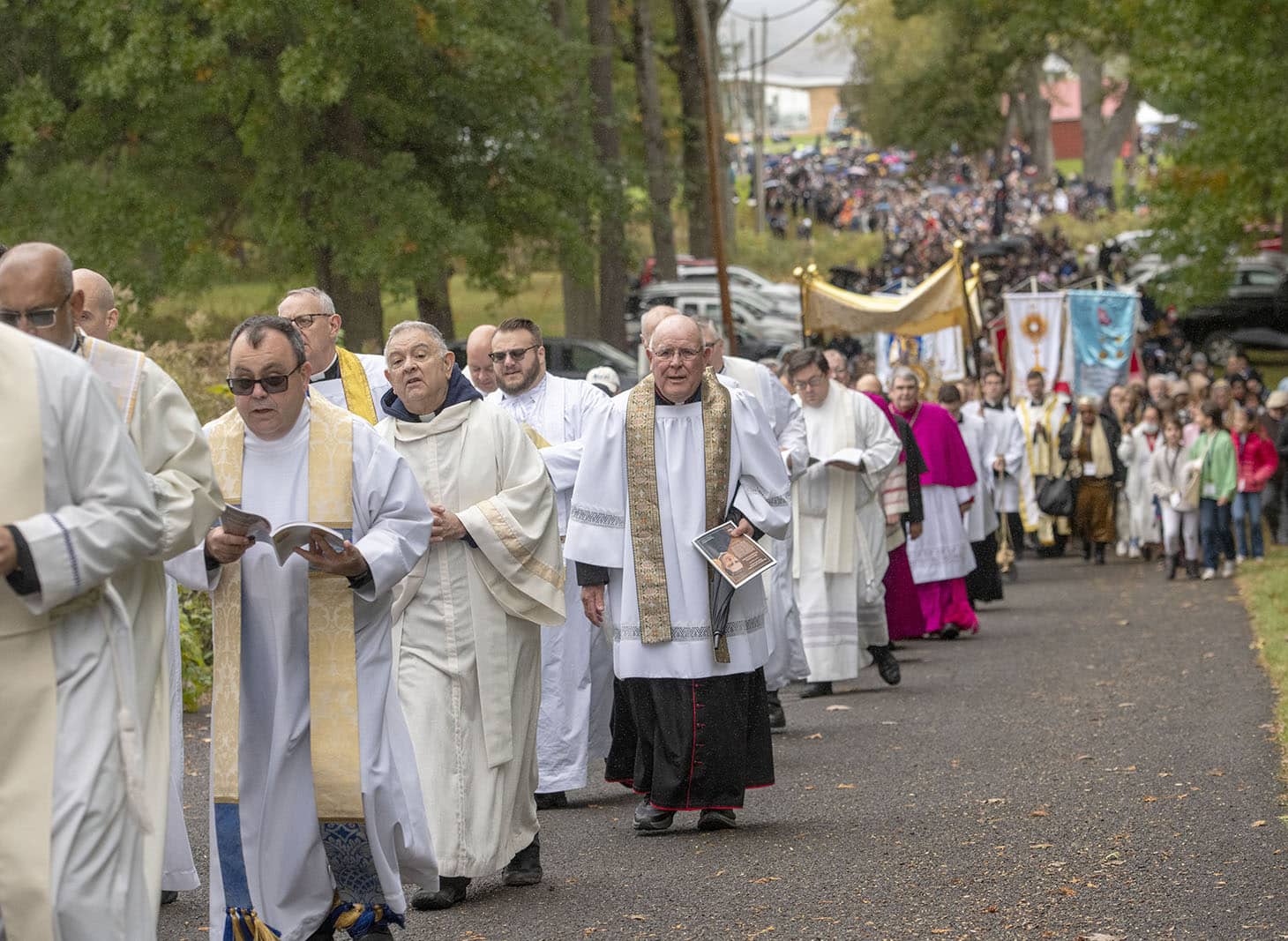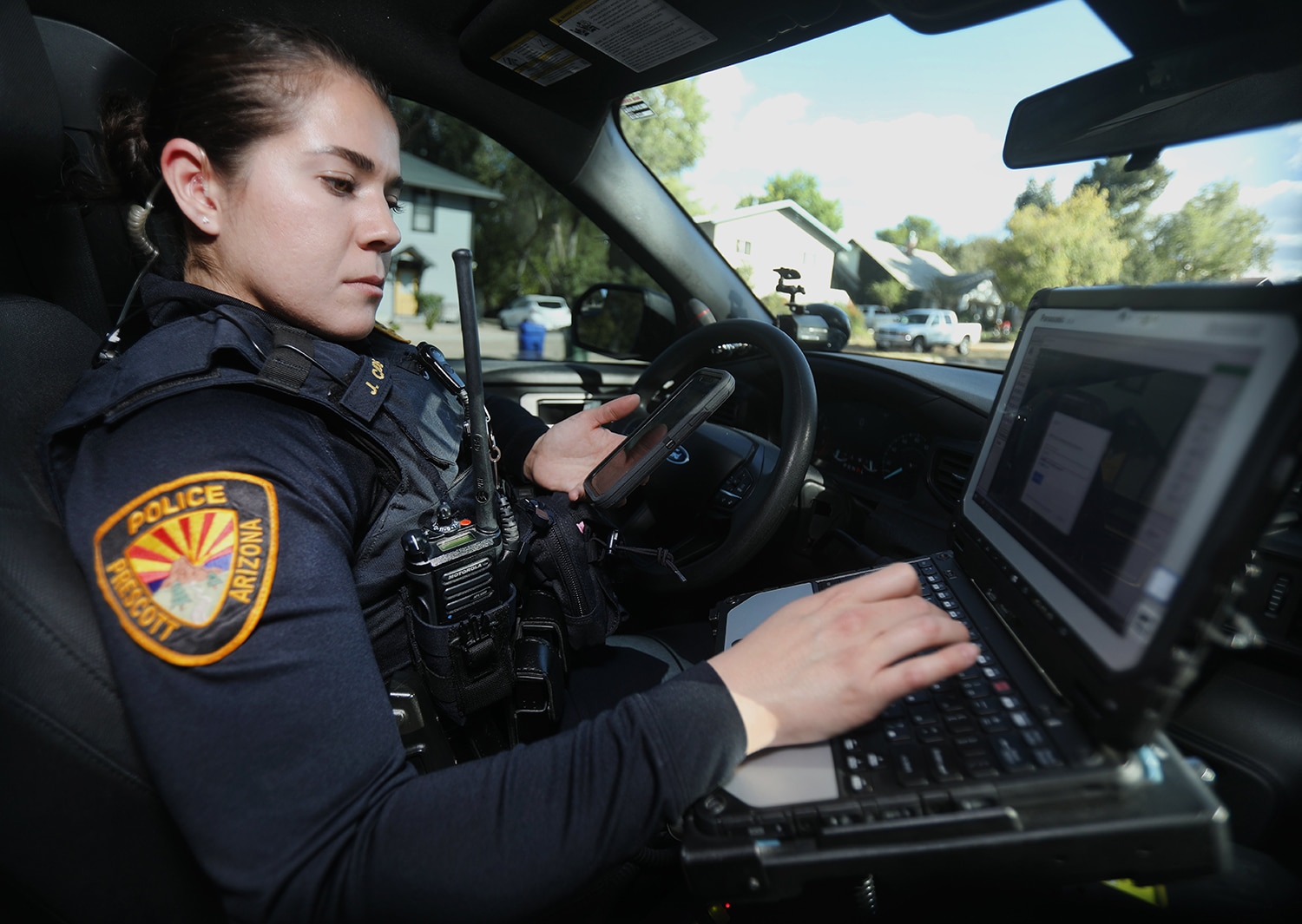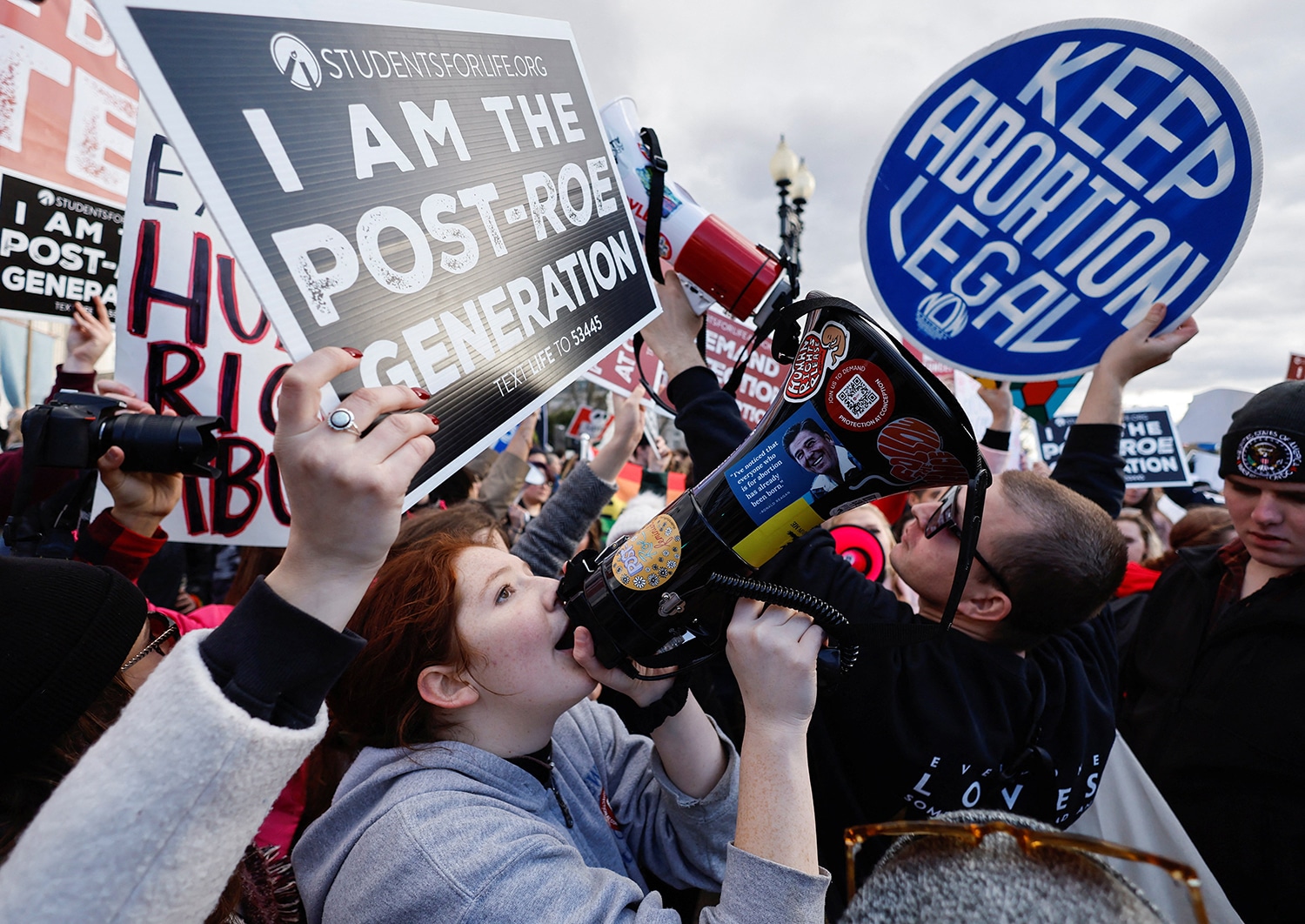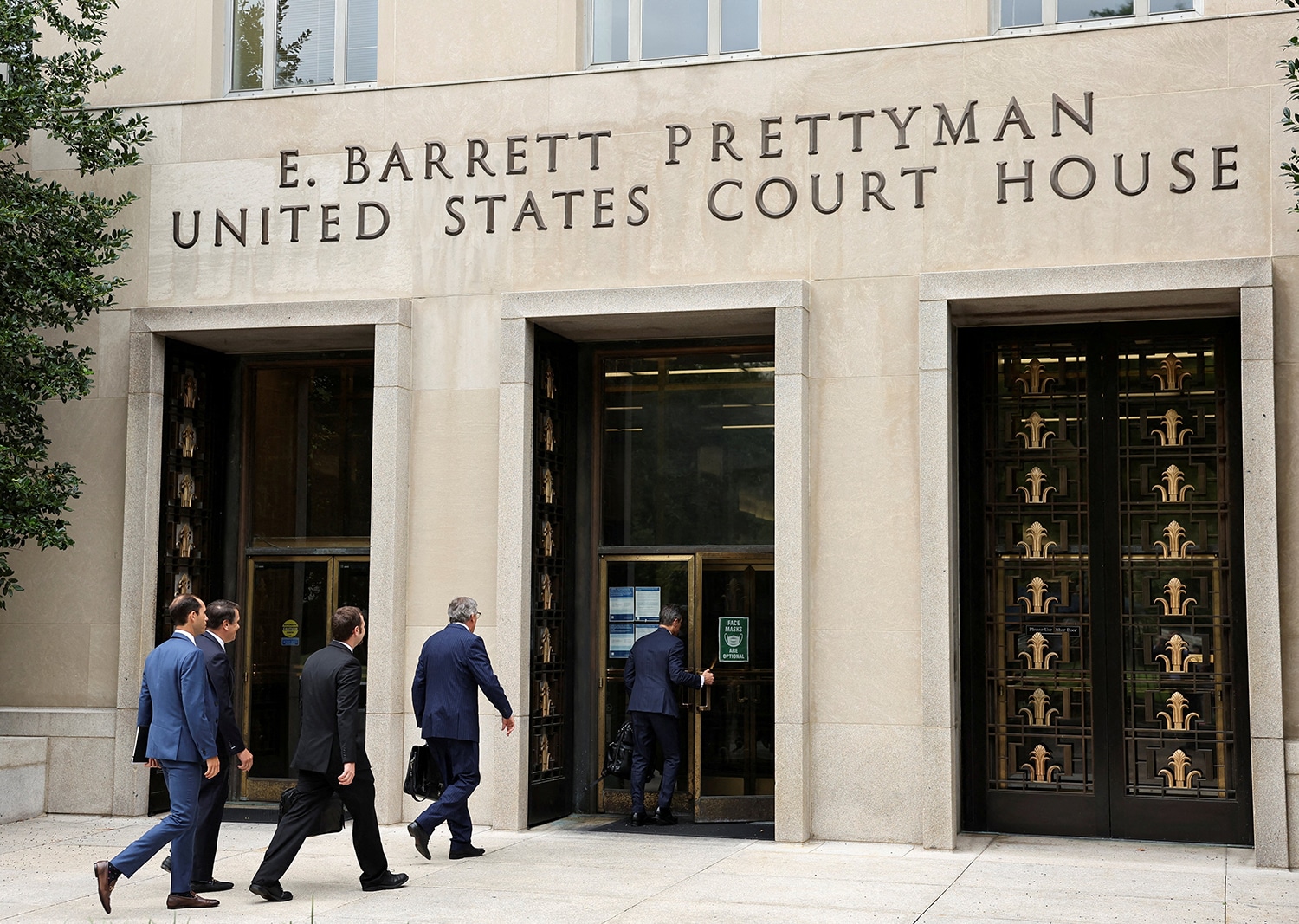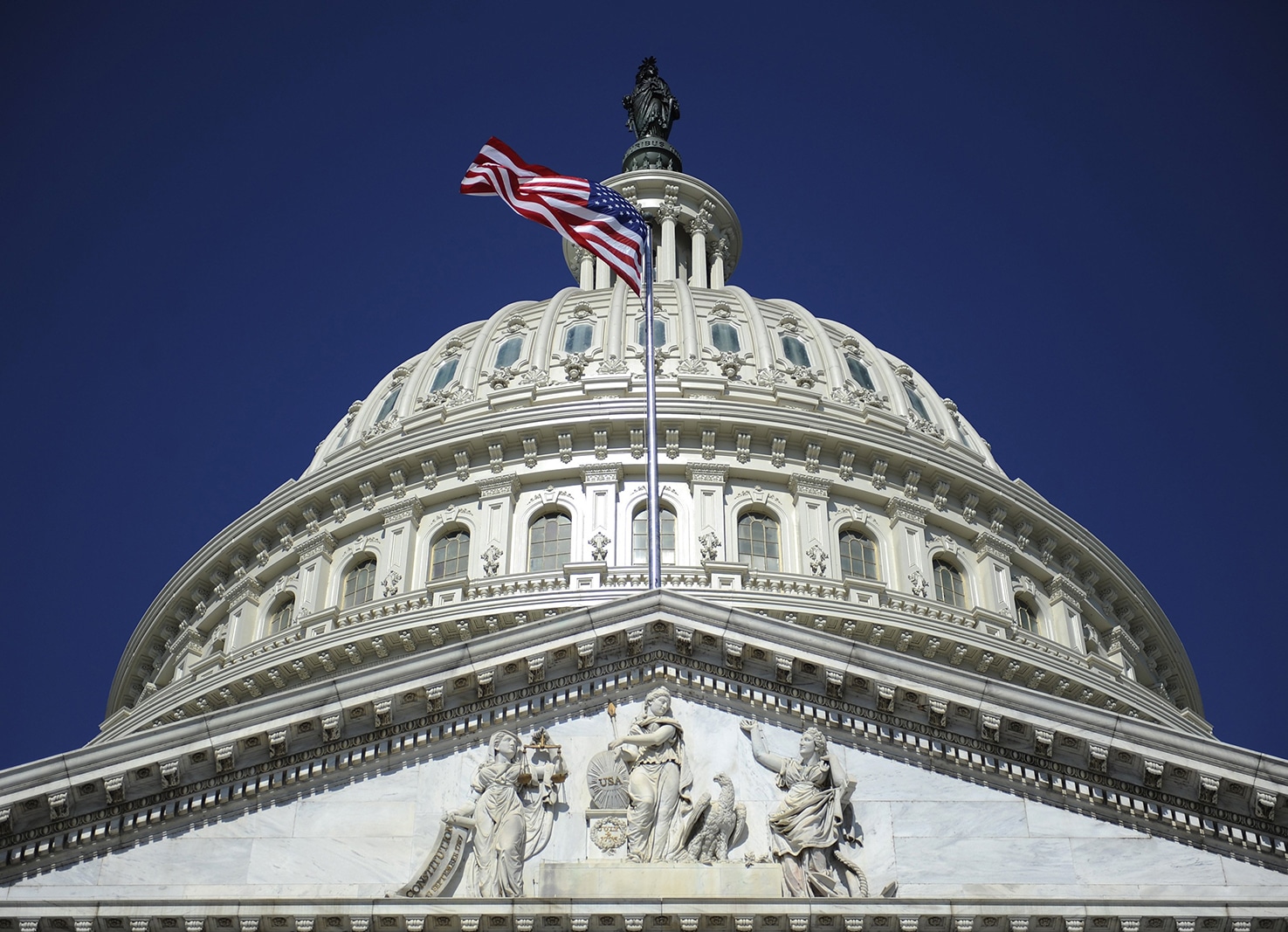(OSV News) — In 1776, Father Junipero Serra, a Spanish Franciscan missionary, dedicated a small mission church in San Francisco to St. Francis Assisi. On May 18, the mission of San Francisco de Asis, also known as Mission Dolores, will host an evening of Eucharistic adoration and prayer for the launch of the National Eucharistic Pilgrimage‘s western route, named for now St. Junipero Serra.
Similar events are planned May 18-19, Pentecost weekend, at the pilgrimage’s other three launch points in Brownsville, Texas, New Haven, Connecticut, and in Northern Minnesota, as four groups of six pilgrims begin their eight-week journey. The routes’ 23 “perpetual pilgrims,” along with their priest chaplains and seven seminarians will accompany the Eucharist, exposed in a monstrance, as they travel — often on foot — across the United States.
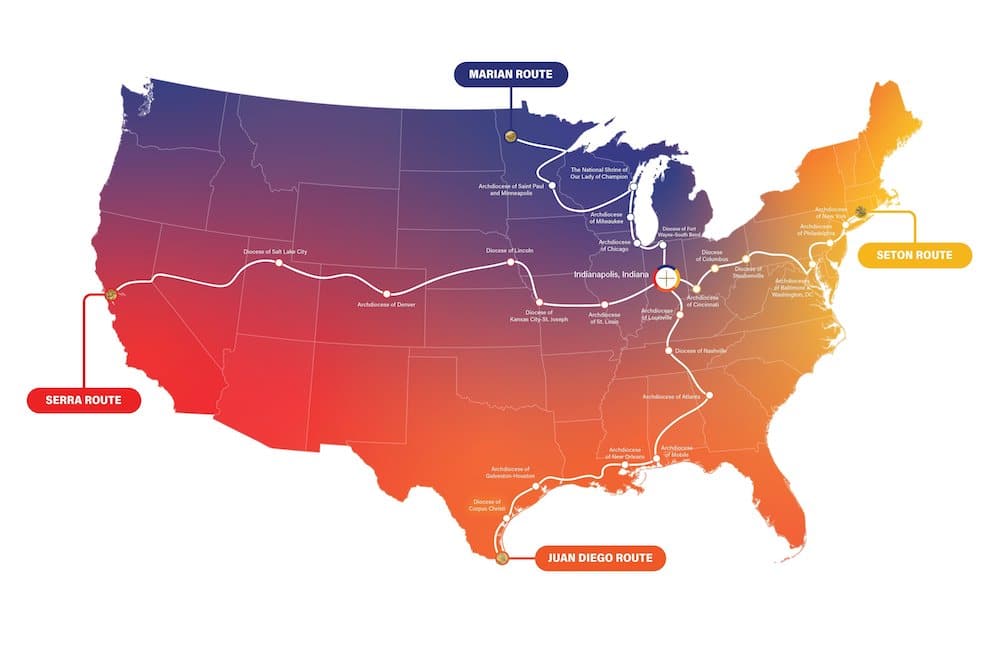
Their itineraries include daily stops along their routes for Mass, adoration and Eucharistic processions to celebrate Jesus’ real presence. The pilgrims will converge in Indianapolis for the National Eucharistic Congress July 17-21. Information about the four routes, including details about pilgrimage events and requested participant registration, is at eucharisticpilgrimage.org.
Southern route: Honoring St. Juan Diego
In Brownsville, along the U.S.-Mexico border, the southern route — named for St. Juan Diego — kicks off May 18 with Mass and dinner for young adults and the route’s perpetual pilgrims. The following day, Bishop Daniel E. Flores will celebrate 8 a.m. Mass at the Cathedral of the Immaculate Conception before leading a daylong procession to three Brownsville Catholic churches: Sacred Heart Mission, Our Lady of Good Counsel and San Pedro. At San Pedro, Bishop Flores will celebrate 4 p.m. Mass, followed by an hour of Eucharistic adoration with benediction, and then dinner and a social hour.
On May 20, the Juan Diego Route pilgrims will begin their day’s journey with a solemn Eucharistic procession between two parishes in San Benito, Texas, 20 miles northwest of Brownsville. From there, they will begin their steady journey along Texas’ Gulf Coast to Louisiana, Mississippi, Alabama, Georgia, Tennessee, Kentucky and Indiana, with stops in Indianapolis’ southern suburbs before meeting the other routes’ pilgrims July 16.
Eastern route: Tribute to St. Elizabeth Ann Seton
The pilgrimage’s eastern route, named for St. Elizabeth Ann Seton, begins with Archbishop Christopher J. Coyne of Hartford celebrating a Pentecost Vigil Mass May 18 in New Haven at St. Mary’s Church, which houses the remains of Blessed Michael McGivney, the priest-founder of the Knights of Columbus. A Eucharistic procession follows the Mass in St. Mary’s neighborhood, which leads into a Holy Hour for young adults and then overnight Eucharistic adoration. On May 19, adoration concludes at 7 a.m. with a 1.5-mile Eucharistic procession from St. Mary to St. Joseph for Mass. Following Mass, the Seton Route’s perpetual pilgrims head to Long Wharf, New Haven’s waterfront district, where they will board a boat southbound for Bridgeport.
At noon, the pilgrims will arrive in Bridgeport Pier for a 1-mile procession to Blessed Sacrament Church for a Holy Hour, commencing a series of processions and Holy Hours to four other Bridgeport churches. The perpetual pilgrims will remain in the Diocese of Bridgeport until May 22, when they will cross into the Archdiocese of New York and the Diocese of Brooklyn. The Seton Route continues through New Jersey, Pennsylvania, Maryland, the District of Columbia, West Virginia, Ohio and western Indiana.
Northern route: Following the Marian path
A two-day regional Eucharistic congress May 17-18 in Bemidji, Minnesota — the second largest city in the Diocese of Crookston — precedes the launch of the pilgrimage’s northern route, known as the Marian Route. At least three of its presenters also will speak at the national congress in July: Bishop Robert E. Barron of Winona-Rochester, Father Michael Schmitz of “The Bible in a Year,” and Bishop Andrew H. Cozzens of Crookston, chairman of the Board of the National Eucharistic Congress Inc.
On May 19, the pilgrimage launches with a 10 a.m. outdoor Mass near Itasca State Park, home to the Mississippi River headwaters. Following the Mass, Bishop Cozzens will lead a 1-mile Eucharistic procession to the Mississippi headwaters. That evening, the perpetual pilgrims will join perpetual adoration at St. Theodore of Tarsus Parish in nearby Laporte, and the following day, they will participate in Mass and a 12-mile Eucharistic procession from Laporte to St. Agnes Parish in Walker. The Marian Route continues through Minnesota to Wisconsin, Illinois and Indiana.
Western Route: Celebrating St. Junipero Serra
After launching May 18 with adoration at Mission Dolores, the western route continues May 19 with Mass at San Francisco’s Cathedral of Our Lady of the Assumption celebrated by Archbishop Salvatore J. Cordileone. The Mass will be livestreamed by EWTN and includes the world premiere of Frank La Rocca’s “Missa Pange Lingua: A Mass For Eucharistic Renaissance,” commissioned through the Benedict XVI Institute. Following Mass, pilgrims will join a Eucharistic procession over the Golden Gate Bridge.
The following day the pilgrims will stop at St. Sebastian in Greenbrae, California, for adoration before processing to Mission San Rafael Arcángel, another mission church established by St. Junipero Serra and his companions. The perpetual pilgrims will then continue their journey on the pilgrimage’s longest route through California, Nevada, Oregon, Idaho, Utah, Colorado, Nebraska, Iowa, Kansas, Missouri, Illinois and Indiana.
While the Serra Route’s opening procession across the Golden Gate Bridge will make for a visual spectacle, Archbishop Cordileone said the pilgrimage’s kickoff is not about a photo op.
“It’s a public manifestation of faith,” he told Angelus, the online news outlet of the Archdiocese of Los Angeles. “That’s what processions are, and this is a very powerful one because it’s encompassing the whole country. Our faith is not meant to be kept within the walls of the churches, but to be brought out into the public square.”
The National Eucharistic Pilgrimage is part of the National Eucharistic Revival, a three-year initiative of the U.S. bishops to inspire deeper love for and understanding of Jesus’ real presence in the Eucharist.
Contributing to this story is Pablo Kay, editor-in-chief of Angelus, the publication of the Archdiocese of Los Angeles.

